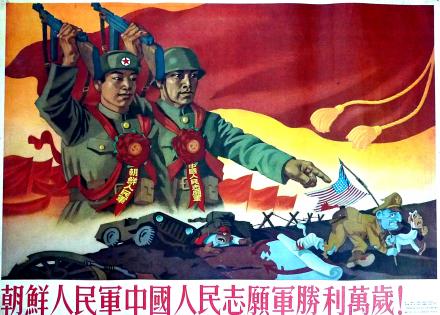For the first time in my life, a Chinese poster about family planning caught my eyes. Here’s how it read:
“For the sake of reform, we will make planned pregnancy a reality,” said a smiling nurse wearing a white hat and coat who held a pamphlet titled “The Guide to Planned Pregnancy” in her right hand, a generic pharmacist bottle in the other. Boys and girls danced in traditional Urgur (Xinjiang) costumes on her left, while a mother and a daughter looked at a statue of themselves on her right.
I had to be staring at propaganda in a renovated bomb shelter, in Shanghai of course.
I haven’t been to many museums here, my one and only was the one in the Pearl Tower of Shanghai. A video of the 70s would’ve served me better.
So when my friend from Peking University visiting Shanghai suggested we visit a propaganda museum, I laughed. When I realized he was serious, I was suspicious.
Located in the old French concession zone in the upmarket Huaihai road (淮海路) area in Puxi (浦西), we walked past leafy neighborhoods dotted by boutique stores. It could have been Sausalito minus the ocean for all I knew. We walked past the frontier of a proper-looking brunch cafe; my cousin told me a cup of coffee would set me back 150 Yuan. This was no laughing matter.
The address sent us to a block of mid-rise apartments dating from the 70s. We found no signs, no indication that this was anywhere but a residential area. We asked the security guard after a wander, and he held out four fingers and pointed down: building number four in the basement it would be.
After dank stairs and sterile white doors, we were met with colourful posters lined up along the walls: big people with big faces optimistically smiling at something far in the distance were smack bang everywhere. Red dominated them all. We began with the founding of the People’s Republic of China: children dressed as sailors, pilots and tank drivers drove Martian like American marines from shore. Next to it depicted people of all ethnicities welcoming the liberation army to their lands.
Then came the drive towards economic production (1953-1957). Here hardworking farmers and factory workers became the backbone of the posters; cold steel and rice paddies adorned the backdrop.
As the years progressed, old colonial masters in the U.S. and Britain became targets of abuse again. “We will pass the British in steel production in 15 years,” read some. Their figures were demonic yet little as the worker/ soldier stood over them.
Somewhere along the way, the sparkling red, the red of the 8 o’clock sun, turned darker, shadows formed within. Angry red became the fury of the soldier, damning his wrath on the rightist who dared to stand in the way, of what was unclear.
Here in the basement was a partial remnant of recent history, its meaning untainted. Here was a place honest about its intentions to purely display propaganda, and that’s okay, because the place lets us judge for ourselves. While some are laughable, some sad, some down-right scary, they all reflected some innocent character of this place and time. Sometimes it is easy to forget that artists also lived in that time.
一位护士微笑着说:“我们将进行改革,让计划怀孕成为现实。” 她头戴一顶白色帽子身穿白色外套,右手拿着一个写着“计划怀孕”的小册子,左手拎着一个普通的药剂瓶。在她左边,身穿维族(新疆)民族服装的年轻男女舞动着,右边则是一位母亲和女儿一起看着自己的雕像。
我不得不在一个翻新了的防空洞中盯着宣传海报看,当然,是在上海。
我没有去过很多这边的博物馆,唯一的一次就是去上海的东方明珠电视塔。那次经历还不如一个七十年代的视频的帮助大。
因此,当我来上海玩的北京大学的朋友提议我们参观一个海报博物馆的时候我笑了。当我认识到他是认真的的时候,仍然疑心重重。
在坐落在旧法租界区的高档的淮海路和浦西区中,我们经过了点缀着几个精品店的一片绿意盎然的街区。 就我看来,这完全相当于是没有海的索萨利托。我们走过一个看起来还不错的早午餐咖啡厅边的时候我表姐告诉我里面的一杯咖啡要150块钱。 这可不是开玩笑的。
我们按着地址找到一片七十年代的中高层公寓区。我们找不到任何标识和能暗示这不是个住宅区的东西。乱走了一阵子之后我们找到一个保安问了问,他伸出四个手指并朝下指:是四号楼的地下室。
沿着潮湿的楼梯向下穿过无菌白色大门之后我们看到了沿着墙壁一字排开的彩色海报:伟人们的大脸望着远方乐观的微笑着,一鼓作气地无处不在着。所有的主色调都是红色。我们从中华人民共和国成立开始看起: 孩子们打扮成水手、飞行员和坦克驾驶员驾驶着火星像从海岸回来的美国海军陆战队队员一样。旁边一副描绘的则是各个少数民族共同欢迎解放军到来的景象。
然后就是对经济生产的推动了(1953-1957年)。 这个时候勤劳的农民和工厂工人成为了海报的支柱。而冷钢和稻田则装饰着大背景。
随着年代的迁移,美国和英国的旧殖民地主人又一次成为被滥用的主题。有一些写着“在钢铁生产上,我们会在最近十五年超过英国。”英美殖民地主的形象是醒目的,但是与站在身边的工人或者士兵相较之下就显得十分渺小了。
一路走着走着,那亮闪闪的如八点钟的太阳一样的红色不知什么时候变暗了,里面渐渐酝酿起阴影。愤怒的红色变成了士兵莫名的愤怒,咒骂着挡路的右倾分子。
这个地下室里是近代史残留的一部分,它所代表的是无污点的近代史。这是一个诚实地仅仅只是为了展示宣传海报这个目的而存在的地方,并且这样也没有关系,因为对这个地方的看法完全取决于我们自己。这些海报有的好笑有的伤感、有的直率地吓人,但他们都反应了这个地方和时间的一些纯真无辜的特质。有的时候我们很容易忘记这些艺术家也生活在那个时期。


